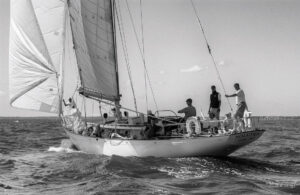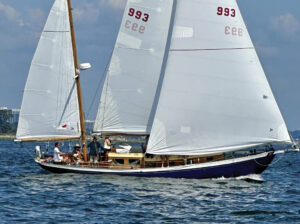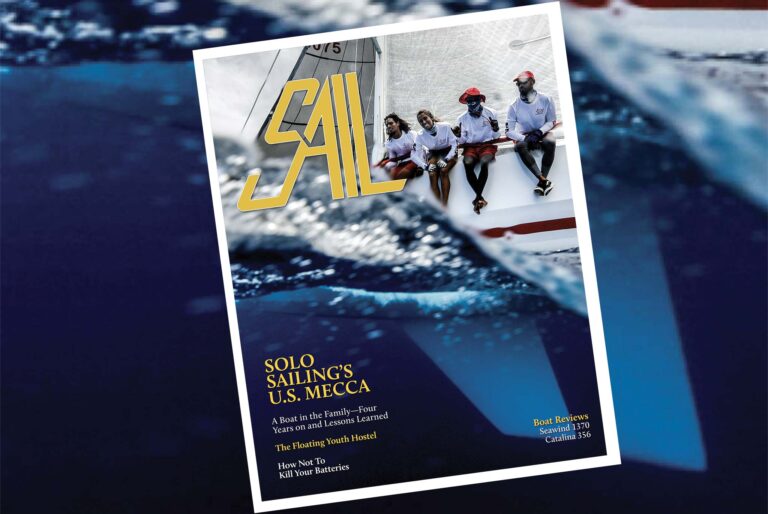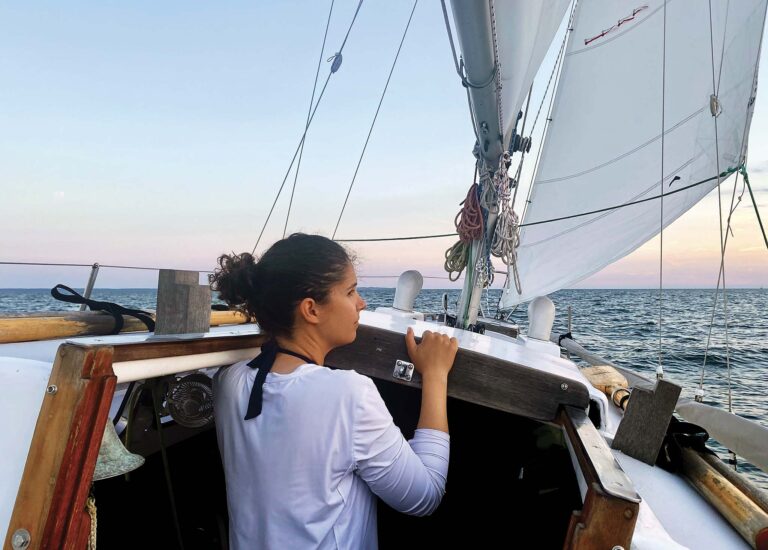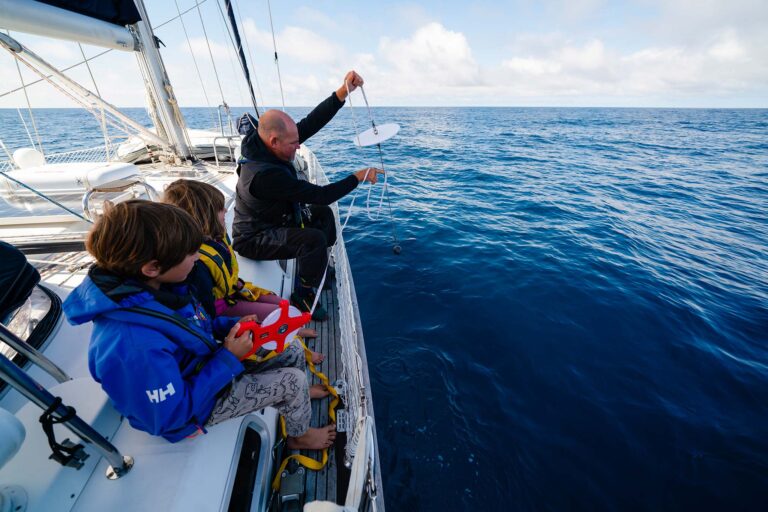Drop your hook in crystal clear turquoise water, walk these white sandy beaches under the bright warm sun and blue sky, and you might just think you are somewhere deep in the Bahamas or Caribbean. It’s hard to believe the Dry Tortugas, my favorite sailing destination in Florida, is only 70 miles west of Key West.
It was 2000 on a warm September evening when my wife, Desir, my sister Jane, her husband, Jack, and I sailed the Admiral 38 catamaran Afloat out through Gordon Pass in Naples. A southeast wind was blowing 10-15 knots. Five-foot seas provided a bit of a roll, but we were comfortable. Our course was 211 degrees, putting us on a near-perfect reach. The prevailing winds were so steady we were able to sail the entire 117 miles to the anchorage at Garden Key and then all the way back five days later without tacking either time. We just set the sails and steered the rhumb line. How cool is that? We made the passage under full sail, with a 635ft2 main and 355ft2 genoa. A thousand square feet of sail makes this cat purr.
I’ve made this trip on a variety of boats at different times of the year, and the winds we experienced were typical for September—10-20 knots and easterly. In summer they are more often light and variable, unless a tropical storm is in the area.
My favorite website for planning a Tortugas trip is Weather Underground (wunderground.com). When you get to the page for the Dry Tortugas, check on the “hourly” forecast. At the bottom of the hourly page you can click on “almanac,” which will take you back to the weather conditions a year ago. You can go back several years to get scatter graphs for each month with wind speed, wind direction and temperatures—a great feature when planning any sailing trip.
Homecoming
My Jack Russell terrier, Lady Pitkeathly—“Lady P” for short—hates being at sea, but I have found one thing that takes her mind off her misery. Fishing! A few hours before we reached Tortugas Park, I grabbed a fishing rod and she sprang to life, dancing around my feet. She eagerly took her position by the rod, her eyes glued to the flashing lure as it skipped and churned along the surface. Her eyes just about popped out of her head each time she saw a fish smash the lure, and she alerted me with a squeal of delight a split second before the first bit of line screeched off the reel.
I have had excellent luck every time I fish these waters, but be sure to check with the rangers about current fishing regulations before fishing inside the boundaries of Dry Tortugas National Park. There are some areas where fishing is absolutely prohibited.
An hour later, Lady P gave me an “are you nuts?” look as I retired the line. But with her help I’d already landed two big kingfish, which were now in the cooler, and one beautiful black fin tuna that I’d filleted for lunch. Desir and Jane soon came out of the galley with a platter of sesame-encrusted flash-seared black fin tuna on a bed of crisp greens with a light soy-based dipping sauce on the side. Life doesn’t get much better than that!
Just after lunch we entered the national park through the southeast channel. In our shallow-draft cat we didn’t need to follow the markers, but there are plenty of shoals in the area that can trip up a careless skipper. Monohulls drawing as much as 7 feet should have no trouble if they stick to the marked channels. After transiting the channel, we sailed to the west side of the main island in the group, Garden Key, dropped our sails, and anchored in the only designated overnight anchorage in the park. The bottom is mostly sand and the holding is good.
After the hook was set, Desir and I launched our dinghy and visited neighbors with gifts of fresh kingfish steaks and fillets. We also gave some to the campers on shore. The stunned and pleased look on the campers’ faces was priceless. They had been eating nothing but freeze-dried and canned food for days. Camping here is not for sissies; you must bring everything you need on one of the Key West dayboats, even water, as there are no provisions available.
Exactly one year earlier, Desir and I had made landfall at this same spot after crossing from Isla Mujeres, Mexico. We’d just spent three years circumnavigating the Caribbean basin and a stopover in the Dry Tortugas made the transition back to life in the United States a little easier. It was sweet to return to the same inviting waters that had once welcomed us home. As is often the case, many of the sailboats in the anchorage had also just crossed from Mexico, and it was a pleasure to reminisce with them, swapping stories about mutual sailing friends and favorite anchorages.
A Long History
Ponce de Leon discovered the Dry Tortugas in 1513. Back then thousands of sea turtles plied the waters and beaches of this desolate outpost. The much needed meat from the 160 turtles he captured was a treat for his crew—so much so he named the tiny island group in their honor. There is no fresh water on the islands, and the modifier “dry” was added to their name in later years. We saw turtles just about everywhere we went.
Over the next 200 years only pirates had much use for the place, until the U.S. government decided to build a fort here in 1846 to protect the shipping lanes through the Florida Straits and Gulf of Mexico. The project did not turn out as planned.



